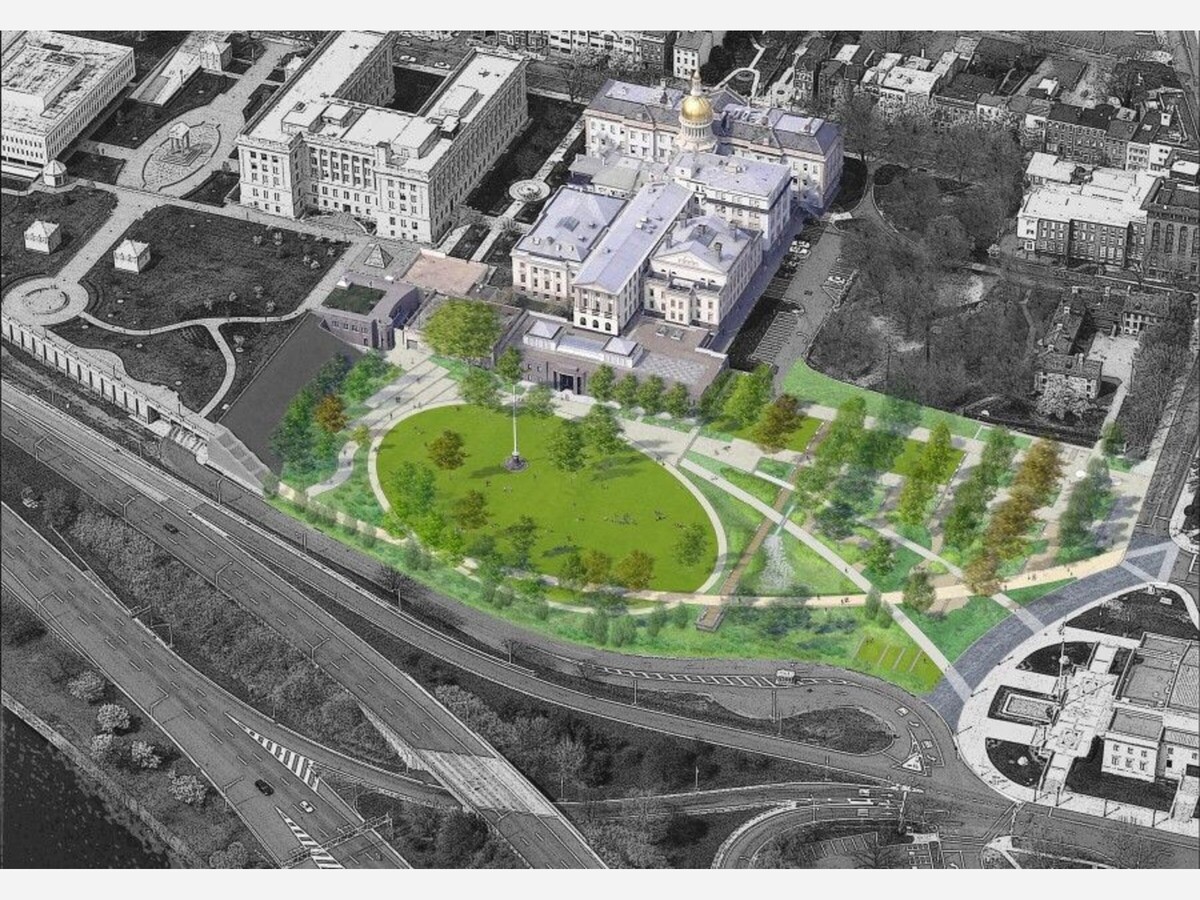Image


“They paved paradise, put up a parking lot,” sang Joni Mitchell in her 1970 song “Big Yellow Taxi,” a commentary on nature’s beauty being lost to development. Mitchell didn’t write the song about New Jersey – but it might seem that way, considering how much green in the Garden State has been covered with asphalt and concrete.
What if we could turn Big Yellow Taxi’s message on its head by (metaphorically) un-paving a parking lot and putting up a paradise? More specifically: creating an urban park in downtown Trenton that would not only serve local residents, but draw visitors to the capital city from near and far.
There’s an opportunity to do just that in the Capitol Complex neighborhood, which includes the State House and Annex, State Library, State Archives, State Museum and Planetarium, Old Barracks Museum, War Memorial building and more.
With a multi-year renovation of the historic State House nearing completion, now is the perfect time to envision the next steps for greening downtown Trenton and creating an urban oasis.
Built in 1792, the State House is the second-oldest continuously used state capitol building in the U.S., after Maryland. Giving it the beautiful green setting it deserves has been a long-term but elusive goal.
Over a century ago, Stacy Park – a grand expanse of open space – was created through a joint city and state effort to reclaim access to the Delaware River waterfront. Over time, however, much of the parkland behind the State House gave way to parking lots and Route 29, severing the city, residents and visitors from the river.
In 2004, Gov. James McGreevey announced plans to create two new urban state parks, in Trenton and Paterson, to provide public green space to underserved populations, preserve sites with historical significance and protect natural resources. McGreevey left office before Capital Park plans could be completed, but Gov. Jon Corzine took up the cause a few years later.
The proposal called for a unified green space connecting the Capitol Complex with the waterfront, filled with museums, civic institutions, historic sites, archaeological resources, regional transportation infrastructure and an ecological network. The park project was successfully put out to bid in 2009, but ultimately abandoned by the incoming administration of Gov. Chris Christie.
Although Gov. Christie did not move forward with Capital Park plans, $300 million in funding was authorized for renovating and restoring the State House building. The restoration is now nearly complete, making the capitol once again a beautiful centerpiece deserving a world-class setting. This gives New Jersey a second chance at creating the public green space envisioned two decades ago.
“Now is the time to be actively planning,” said Sally Lane, who served as the project manager for the urban park proposal. She is now the board chair of the Crossroads of the American Revolution Association, which is proposing a “Revolutionary War Experience” museum and interpretive center in Trenton.
Unfortunately, Lane said, too many changes have taken place in and around the Capitol Complex to go back to the original 2009 plan. “We can’t just take this plan that we spent years having hearings on,” she said. “We have to ask, what part of this can we possibly resurrect?”
In 2018, Gov. Phil Murphy signed an executive order recognizing both the unique role Trenton has played in New Jersey’s history, and the state’s status as the largest landowner and employer in Trenton. The executive order compels all state agencies to work together for the betterment of Trenton.
Gov. Murphy can leave a lasting legacy by pushing to re-shape the Capital Park concepts and plans to fit today’s landscape. There’s a wonderful opportunity to create a public green space to the west of the State House, and connect the Capitol Complex to the Assunpink Greenway and Mill Hill Park to the south.
“Developing the first phase of the Capital Park as a capstone to the Statehouse renovation should be a no brainer. The future park site is currently being used as the staging area for the restoration and is ready to go. With a minimal investment, the State can leverage the restoration and add tremendous value to downtown Trenton. It would be a shame to miss this opportunity.” said Peter Kasabach, executive director of New Jersey Future and a Trenton resident.
Busy Route 29 still presents a formidable barrier to public access to the Delaware riverfront. But the federal infrastructure bill could potentially provide funds to convert a mile-long section of the highway near the Capitol Complex into a “boulevard” with more pedestrian-friendly crossings.
Creative ideas to reclaim access to the city’s river have been discussed over many years. Before the highways and parking lots were built, Stacy Park connected the State House to the river and canal system. If done properly, this park development can magnify the capitol restoration work and serve as a model of modern sustainable open space design that incorporates stormwater protection strategies while creating public /civic space for visitors and residents.
As the famous sign on the Lower Trenton Bridge says, “Trenton Makes, The World Takes.” If Trenton and the state make the most of this opportunity, the world will take notice! Liberty State Park in Jersey City, Paterson Great Falls National Historic Park in Paterson and the newly reclaimed and developed Cramer Hill Waterfront Park in Camden are great urban success stories. Our Capital City could and should be the next!
To learn about protecting New Jersey’s land and natural resources, including urban parks, visit the New Jersey Conservation Foundation website at www.njconservation.org or contact Jay Watson at info@njconservation.org.